1. Introduction
In today’s fast-paced lifestyle, sleep disorders have become a global public health issue. According to a World Health Organization report, over 300 million people worldwide are affected by sleep disorders, accounting for approximately 27% of the global population. This includes issues such as chronic insomnia and decreased sleep quality due to work stress, life pace, and psychological factors, as well as sleep abnormalities resulting from physiological factors or illness. Sleep disorders not only diminish quality of life but can also lead to anxiety, depression, and, in severe cases, increase the risk of cardiovascular diseases such as coronary heart disease, hypertension, and diabetes [1]. Art therapy, as a non-pharmacological approach, enables participants to engage in artistic activities to express and release emotions, regulate mood, and improve cognitive function. Various forms of art therapy have proven effective in alleviating sleep disorders. Participants use artistic forms like music and painting as outlets for emotional expression, helping individuals regain inner balance and harmony, and even achieve self-affirmation and respect, thus enhancing sleep quality. Many individuals are turning to art therapy to effectively manage sleep disorders and achieve better sleep quality. However, traditional forms of art therapy face certain practical limitations, which prevent them from delivering the ideal therapeutic outcomes expected by all participants. Fortunately, rapid advancements in modern technology have opened unprecedented opportunities for art therapy, providing a richer and more diverse array of methods that enable more precise and personalized treatment, thereby improving therapeutic efficacy and offering hope to those with sleep disorders. For instance, through smart algorithm analysis, personalized recommendations, and real-time feedback, AI can provide more accurate and individualized art therapy solutions for patients with sleep disorders. Smart devices can monitor sleep patterns and improve the sleep environment by adjusting ambient lighting and sound. Furthermore, AI-based virtual reality technology can create immersive art experiences that help patients relax and relieve stress.
Therefore, this study aims to explore the feasibility of integrating AI technology into art therapy, proposing innovative therapeutic models specifically for sleep disorder groups. By combining traditional art therapy with modern AI technology, we aim to provide more efficient, convenient, and personalized therapeutic options for individuals with sleep disorders, ultimately improving their quality of life and promoting the health and well-being of society as a whole.
2. Art Therapy and Artificial Intelligence
Art therapy is a process through which individuals engage in creative activities, externalizing the subconscious and bringing it to a conscious level, thus promoting emotional expression, mood regulation, and cognitive improvement. Its origins trace back to prehistoric cave paintings and hieroglyphics, where emotions were conveyed through visual forms before language was fully developed. Since the concept was formally introduced in the 1930s, it has expanded beyond traditional mediums like music, painting, and dance to encompass diverse forms such as drama, writing, and photography, often blending multiple disciplines with cross-disciplinary characteristics. The core of art therapy lies in its ability to help individuals explore themselves, express emotions, resolve issues, and gain self-awareness in a non-verbal, liberating, and safe environment. While art therapy is also used in psychotherapy, the approach discussed here is not aimed at treatment but rather at enhancing overall well-being, making it accessible to a broader audience.
However, as the pace of life accelerates, traditional art therapy often requires significant time, specialized locations, and skilled therapists to achieve effective outcomes, limiting its accessibility due to time, location, and resource constraints. The integration of artificial intelligence (AI) is reshaping the practice of art therapy, helping it overcome these barriers and become more widely recognized and accessible. AI can precisely capture individual emotional states and monitor them in real time through smart devices, leveraging intelligent algorithms to analyze data and provide more personalized therapeutic solutions. For instance, Chinese artist Fei Jun’s installation Emotional Theater employs high-precision ECG signals and intelligent emotion algorithms to detect participants’ emotions and offer corresponding music and visuals, creating a personalized therapeutic experience (Figure 1). Additionally, AI algorithms can analyze vast quantities of data from art pieces and creative processes, identifying correlations between creative behaviors and mental health. Through continuous learning and optimization, AI can offer deeper insights for therapists and even act as an electronic therapist. Combined with virtual reality technology, AI can provide immersive art therapy experiences. In sum, AI offers a powerful tool to support art therapists, while also enabling individuals to experience more personalized and effective therapy. As AI continues to advance, the future of art therapy may be profoundly transformed.
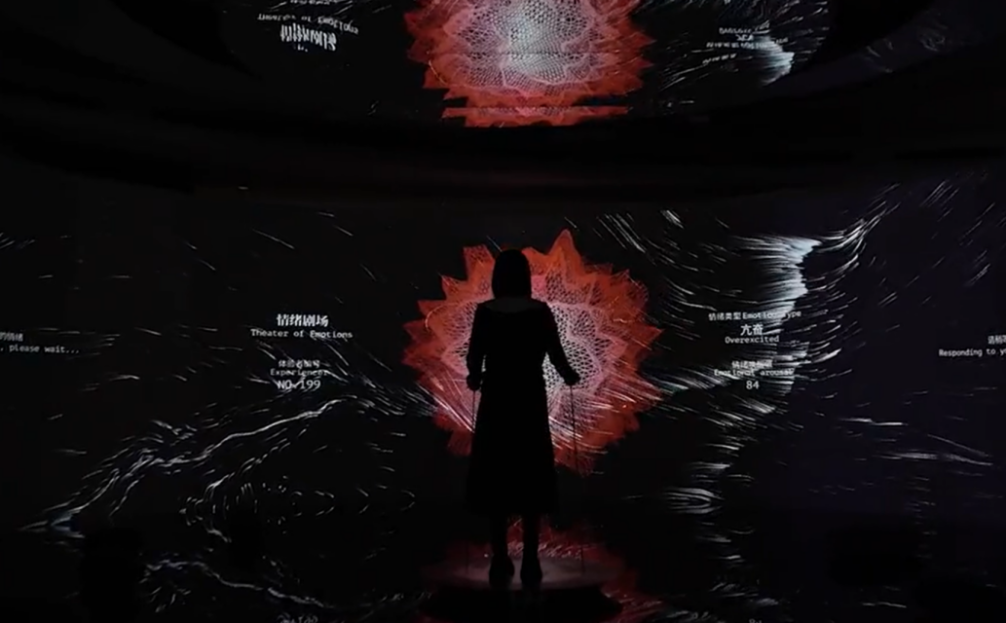
Figure 1: Emotional Theater.
3. Art Therapy for Individuals with Sleep Disorders
3.1. Characteristics and Conditions of the Population
Sleep disorders have become a global public health issue. According to a World Health Organization report, around 40% of adults get less than the recommended 7-9 hours of sleep each night. A survey by the China Sleep Research Society shows that the incidence of insomnia among Chinese adults is as high as 38.2%, with over 300 million people experiencing sleep disorders in China alone [2]. Sleep disorders are typically characterized by abnormal sleep quantity (hypersomnia, insomnia, difficulty falling asleep, light sleep, etc.) and abnormal occurrences during sleep (such as sleepwalking, sleep talking, night terrors, and nightmares). Due to prolonged insufficient or poor-quality sleep, individuals with sleep disorders may face memory decline, difficulty concentrating, emotional instability, and, in severe cases, an increased risk of coronary heart disease, hypertension, diabetes, and other cardiovascular diseases. Psychologically, they may feel helpless, isolated, or lose interest in life, often exhibiting symptoms of anxiety, depression, and stress reactions. This significantly impacts their quality of life, highlighting the need for more effective relief methods.
3.2. Forms of Therapy
Several art therapy forms have proven beneficial for individuals with sleep disorders, including music therapy, painting therapy, and dance therapy. The frequency and pressure of sound waves can evoke psychological responses that influence the body’s ability to perceive stress [3]. Additionally, music therapy, through listening to and creating music, affects melatonin and cortisol levels [4], regulates the sleep-wake cycle, and alleviates stress and worries caused by psychological and social factors, ultimately enhancing stress tolerance, and modulating neuroendocrine and immune system functions to improve sleep [5]. Painting therapy, meanwhile, aids individuals in expressing their inner worlds through visual art creation. The selection of colors and shapes facilitates the release of inner tension and anxiety, helping to regulate emotions [6]. Mandala painting, in particular, fosters self-awareness and a sense of stability and harmony, enhancing subjective well-being and promoting better sleep. Dance therapy, including activities like cheerleading and Latin dance, combines physical movement, rhythmic music, and interactive communication during the dance process to promote physical and mental relaxation, which can improve hormone secretion and, consequently, support better sleep [7].
These various art therapy interventions offer a non-traditional therapeutic option for individuals with sleep disorders. Physiologically, they promote better sleep, and psychologically, they help shift focus away from sleep problems, reducing anxiety related to these issues. Additionally, the act of creating art allows emotional release, achieving relaxation and healing. The inclusivity and diversity of art therapy also enable personalized approaches that cater to individual needs, making the therapy more humane and individualized. With advancements in modern technology, there are increasingly more attempts to integrate it into traditional art therapy to address sleep disorders. For example, Virtual Reality (VR) technology can create immersive art experiences, allowing individuals to relax in a virtual art world and reduce perceptions of real-world stress. Wearable devices can stimulate the senses by altering light, sound, and scent, aiding in dream incubation and improving sleep quality [8]. Furthermore, by analyzing the creative process, these technologies can offer real-time feedback and personalized therapeutic suggestions, making the therapeutic process more interactive and individualized.
In summary, as a non-pharmacological intervention, art therapy shows immense potential in improving the psychological state and sleep quality of individuals with sleep disorders. The following sections will propose various innovative art therapy solutions based on modern artificial intelligence technology, tailored to the characteristics of this population.
4. Exploring AI-Based Artistic Therapies for Individuals with Sleep Disorders
4.1. Mandala Painting
Mandala painting, an ancient art form, has recently been integrated into treatments for various types of sleep disorders, demonstrating unique therapeutic effects. Research shows that mandala painting training can significantly alleviate negative emotions in high-risk pregnant women, improve sleep quality, and enhance coping strategies [9]. Additionally, it can reduce anxiety and depressive symptoms among patients with primary liver cancer undergoing radiofrequency ablation, enhancing their sleep quality [10]. By guiding patients in filling colors within circular patterns, mandala painting not only promotes physical and mental relaxation but also encourages self-reflection and emotional expression through symbolic art, effectively improving mood [11]. Furthermore, mandala painting can induce a meditative state, reducing anxiety and stress, thus enhancing sleep quality [9].
The integration of AI can further enhance the sleep-promoting effects of mandala painting by creating an AI-assisted painting system tailored to the needs of individuals with sleep disorders. This system comprises three stages: pre-painting assessment, painting assistance, and post-painting evaluation and mapping, all working synergistically to maximize sleep benefits.
Pre-Painting Assessment: Art therapist Kellogg analyzed numerous mandala artworks and, combining them with Jung’s concept of the self, proposed the “Mandala Great Round” theory. This theory suggests that mandala works can project an individual’s level of self-awareness and has categorized 12 stages represented by corresponding mandala cards, known as MARI cards, which assess an individual’s current stage [12]. This method of using mandala patterns to assess user characteristics can be employed before painting to gauge the user’s state of awareness and emotional condition, allowing for a personalized therapeutic plan.
Assistance During Painting: Studies indicate that the therapeutic mechanism of mandala painting primarily stems from its protective and integrative qualities, allowing the painter to symbolically address and integrate inner conflicts, resulting in emotional stability and harmony [11]. Therefore, the painting content should align with the user’s desired symbolism. Large data sets can be utilized to generate and filter patterns that align with the painter’s emotions or chosen theme, producing several standard mandala options to choose from. During the painting process, electronic drawing software or VR painting can be used to create an immersive and calming environment, effectively reducing anxiety and stress.
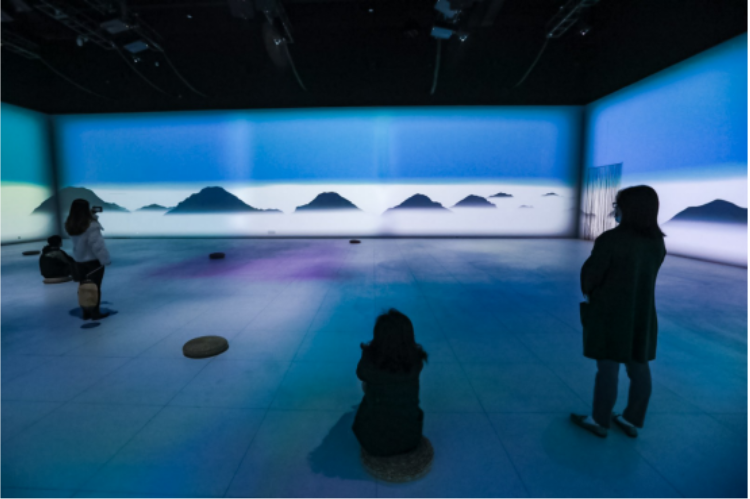
Figure 2: 5D Art Exhibition of The Great Wave off Kanagawa
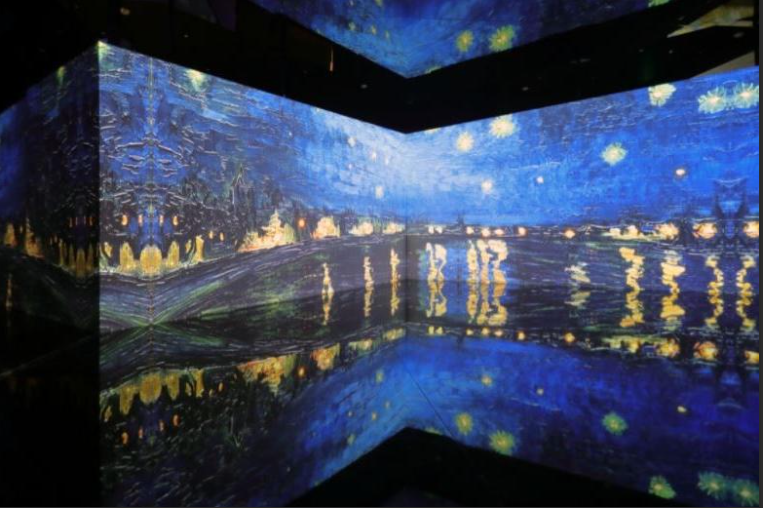
Figure 3: 5D Art Exhibition of Starry Night
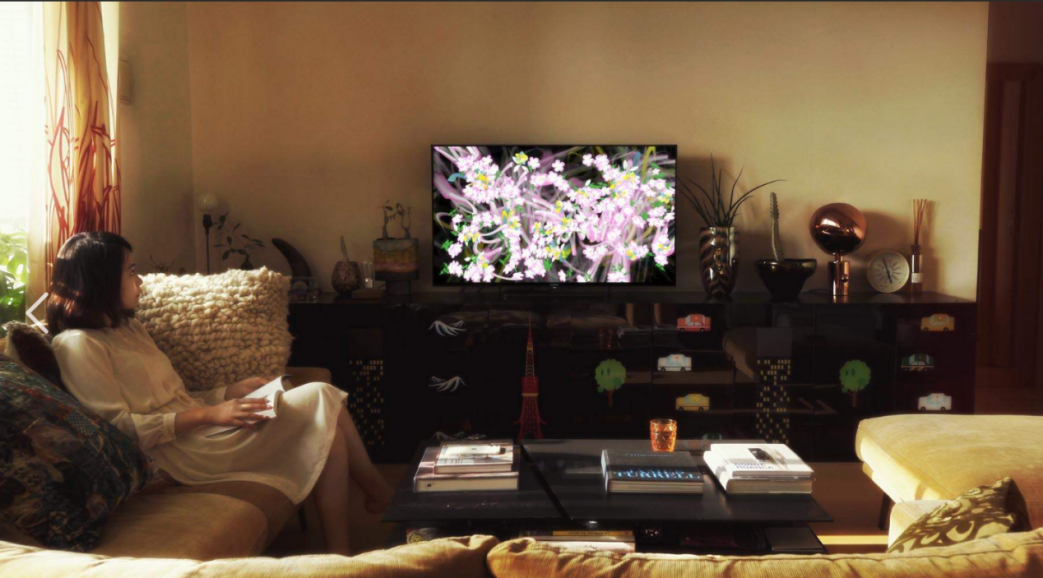
Figure 4: Flowers Bombing Home - Hand-drawn flowers bloom dynamically on-screen
Post-Painting Evaluation and Mapping: After completing the coloring, users can be encouraged to describe and name their artwork, providing a form of self-mapping. AI can then analyze the artwork to extract emotional and data insights, evaluating the therapeutic effectiveness and adjusting for improved future sessions. Following the final artwork, researchers have explored methods of digital re-creation to enhance therapeutic effects, creating a unity between self and artwork. For example, 5D art exhibitions such as The Great Wave off Kanagawa and Starry Night bring paintings to life (Figures 2 and 3), while the Flowers Bombing Home project generates dynamic visual graphics for interactive engagement (Figure 4). Research indicates that as brainwaves gradually shift into the θ wave state, individuals approach sleep [13]. Thus, AI can animate mandala designs with gentle, rotating motion, using consistent speed and dynamic looping to guide brainwaves toward the θ state, facilitating entry into sleep.
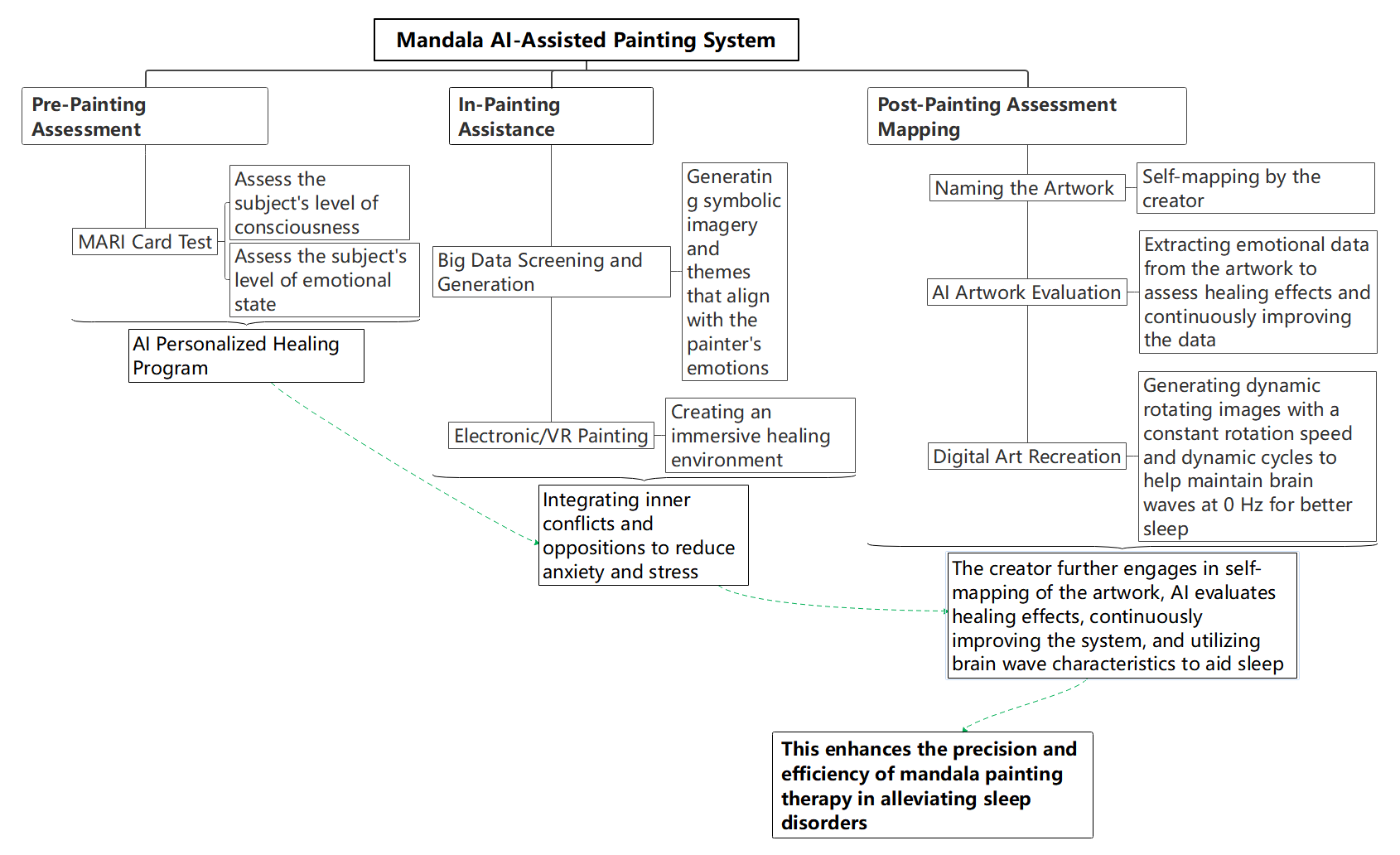
Figure 5: The Mandala AI-Assisted Painting System.
The Mandala AI-Assisted Painting System (like Figure 5 shows):
Pre-Painting Assessment - MARI Card Test - Assess the subject's level of consciousness and emotional state
(AI Personalized Healing Program)
In-Painting Assistance - Big Data Screening and Generation (Generating symbolic imagery and themes that align with the painter's emotions) - Electronic/VR Painting (Creating an immersive healing environment)
(Integrating inner conflicts and oppositions to reduce anxiety and stress)
Post-Painting Assessment Mapping - Naming the Artwork (Self-mapping by the creator) - AI Artwork Evaluation (Extracting emotional data from the artwork to assess healing effects and continuously improving the data) - Digital Art Recreation (Generating dynamic rotating images with a constant rotation speed and dynamic cycles to help maintain brain waves at 0 Hz for better sleep)
(The creator further engages in self-mapping of the artwork, AI evaluates healing effects, continuously improving the system, and utilizing brain wave characteristics to aid sleep)
This enhances the precision and efficiency of mandala painting therapy in alleviating sleep disorders.
4.2. Intelligent Wearable Devices (Smart Products)
Modern smart wearable devices have become essential tools for monitoring and improving sleep disorders. These devices typically include smart wristbands, mattresses, and pillows that can monitor sleep patterns, heart rate, respiratory rate, and other physiological parameters in real-time. Through data analysis, they offer personalized recommendations for improving sleep quality. However, most current products lack targeted functionality and fail to meet the urgent needs of specific groups aiming to enhance sleep. Studies involving 100,000 individuals’ sleep patterns have revealed that women are more prone to insomnia, with Erasmus University Medical Center in the Netherlands finding that, in the U.S., U.K., and Netherlands, insomnia rates are higher in women than in men [14]. Middle-aged and older women, in particular, experience higher rates of insomnia, often due to physiological factors such as endocrine disorders, hormonal changes related to menstruation, pregnancy, and menopause (decreased estrogen), joint pain, fatigue, and sensations of crawling on the skin. Psychologically, women may be more prone to insomnia due to their sensitivity, heavier family burdens, social vulnerabilities, and tendencies toward excessive worry, resulting in difficulties falling asleep, shallow sleep, and vivid dreams. These insights provide inspiration for designing wearable devices tailored to middle-aged and older women with sleep disorders.
Firstly, to address sleep difficulties in middle-aged and elderly women, this wearable device needs to assist with sleep induction. The psychological reason for these difficulties often lies in overthinking and excessive worry. In such cases, attention redirection is essential, which can be achieved before bedtime by using Freud’s psychoanalytic method of “transference.” The “biophilia hypothesis” suggests that humans’ natural environmental retrieval abilities, developed through evolution, help them seek benefits and avoid harm, making nature a key therapeutic factor. Tranquil and beautiful landscapes, green plants, and specific natural settings (such as flowing water, flower fields, and forests) are classic therapeutic environments [15], serving as ideal objects for transference for middle-aged and elderly women who may find it difficult to experience nature directly in modern society. Artificial intelligence-powered wearable devices can act as a medium of transference for these women, simulating olfactory and auditory experiences of natural environments. This immersive experience helps users relax, thereby promoting higher-quality sleep.
Secondly, many sleep aid products available on the market are designed solely for use in bed and may cause discomfort due to their weight and materials. Therefore, in consideration of feminine and physiological needs, it is desirable for the product to be not only a comfortable and lightweight bedding accessory but also a daily item. Flexible wearable products (flexible smart textiles) can provide the comfort needed for falling asleep while also becoming part of everyday attire, catering to women’s pursuit of beauty, making them a favorable choice. For instance, a set of flexible wearable devices designed as earrings and a necklace could be created, where the earrings emit sounds and simulate scents, and the necklace stimulates nerves to alleviate pain potentially caused by conditions such as arthritis. This setup would also enable real-time monitoring of sleep conditions and, when combined with an app, could help formulate personalized sleep plans, gradually improving sleep habits and enhancing overall sleep quality.
4.3. Dream Visualization
Sleep disorders encompass both insomnia and nightmares. Among modern individuals, insomnia is often caused by life pressures leading to emotional issues such as depression and anxiety. Studies indicate a positive correlation between sleep quality and levels of depression and anxiety [16]. The accumulation of negative emotions or psychological trauma can also trigger nightmares. Nightmares typically occur during the REM stage of dreaming, a phase marked by more vivid narrative and emotional experiences compared to NREM dreams [17]. During REM sleep, brain structures related to emotion and memory re-activate, temporarily excluding anxiety-inducing factors and playing a crucial role in processing emotions, particularly negative ones [18]. Therefore, nightmares can sometimes be beneficial, as they allow for the digestion of negative emotions. Many individuals, however, seek ways to process dreams more effectively. Dream therapy aims to facilitate emotional healing by using technology to interpret, analyze, and process dreams, thereby helping participants transform negative emotions through their dreams.
There are many existing technologies related to dream engineering. Among them, a research team from MIT has combined dream incubation techniques with the wearable device Dormio, collaborating with psychiatrists specializing in post-traumatic stress disorder to conduct nightmare therapy, which has yielded certain results [19]. Other teams have utilized dream visualization technology, employing electromyography (EMG) and electroencephalography (EEG) to capture the emotional states of dreams and transform them into visual images based on participants’ descriptions, helping individuals understand their dreams and engage in self-mapping [20]. By integrating both approaches, we can collect EEG data from users during their rapid eye movement (REM) sleep phase using wearable devices, and analyze this data to assess the emotional content of their dreams. Based on the understanding of the fluctuations in dream emotions, rather than merely processing these emotions during sleep, we prefer to adopt a humanistic approach, allowing users to address their dream-related issues upon waking, thereby engaging in self-mapping and gaining a better understanding of themselves. This analytical approach to one’s own dreams, as one of the techniques in Freudian psychoanalytic therapy, enables participants to confront and resolve their underlying negative emotions, reducing resistance to nightmares and alleviating pre-sleep anxiety, which positively contributes to improved sleep quality. Moreover, there are various methods for users to resolve their dreams independently. We can conceptualize dream emotions and create algorithmic models that correspond emotions to intentions and colors, generating narratives based on emotional fluctuations and presenting them in a gamified format. This gamified design can encourage users to change their behaviors and have a positive impact [21]. For instance, many people tend to forget or hesitate to recall their nightmares, but the fun and self-awareness stimulated by game elements can motivate individuals to actively address their dream issues and alleviate sleep disorders. In the game, players can create a character that represents themselves in the dream, allowing this character to resonate with them and resolve dilemmas through simple choices, puzzles, or elimination games, courageously confronting difficulties to rewrite the endings of their nightmares.
5. Conclusion
With the rapid advancement of artificial intelligence technology, its application prospects in art therapy for individuals with sleep disorders are increasingly promising. By combining traditional art therapy methods with modern intelligent technology, we can provide more personalized and efficient mental health support for those with sleep-related issues. Innovative approaches, such as mandala painting, smart wearable devices, and dream visualization, not only enhance the interactivity and immersive experience of art therapy but also improve the precision and efficacy of therapeutic outcomes. However, the widespread adoption of these technologies requires overcoming challenges related to accuracy, safety, data processing, and personalized treatment recommendations. Future research should focus on technology optimization, ethics, and privacy protection, and through interdisciplinary collaboration, work toward providing a more comprehensive, in-depth, and humanized therapeutic experience for individuals with sleep disorders. In sum, the application of artificial intelligence technology in art therapy for sleep disorder groups heralds the birth of a new therapeutic model. This advancement promises not only to improve the quality of life for these individuals but also to bring profound transformations to the field of mental health.
References
[1]. Wang, Y., Song, M., Wang, R., et al. (2017). Insomnia and multimorbidity in the community elderly in China. Journal of Clinical Sleep Medicine, 13(4), 591.
[2]. Su, L., & Lu, Z. (2018). Interpretation of the 2017 China guidelines for the diagnosis and treatment of insomnia. World Clinical Drugs, 39(4), 217-222.
[3]. Ji, C., Lin, H., & Ma, R. (2020). Clinical efficacy of music therapy on sleep disorders in patients with postpartum depression. Chinese Community Doctors, 36(3), 15.
[4]. Yang, M. (2021). Effects of mindfulness-based soothing music training on acute stress disorder and sleep disorders in post-cerebral hemorrhage patients. World Journal of Sleep Medicine, 8(10), 1761-1763.
[5]. Su, S. (2020). Clinical study on the efficacy of combined music therapy and negative ion therapy in treating sleep disorders in elderly patients. Contemporary Nurses (Upper Edition), 27(5), 145-146.
[6]. Tong, X. (2023). The nature, stages, and recommendations of art therapy in painting—Based on Jungian analytical psychology theory. Journal of Guizhou University (Art Edition), 37(1), 97-103. https://doi.org/10.15958/j.cnki.gdxbysb.2023.01.012
[7]. Wu, Q. (2022). Study on the effect of Latin dance exercise on sleep quality and related physiological and biochemical indicators in middle-aged women with sleep disorders (Master’s thesis, Guangzhou Sport University, Guangdong, China).
[8]. Dement, W., & Wolpert, E. A. (1958). The relation of eye movements, body motility, and external stimuli to dream content. Journal of Experimental Psychology, 55(6), 543-553.
[9]. Hu, J., Yang, X., Wang, Z., et al. (2023). Effects of mandala painting training on negative emotions, coping styles, and sleep quality in high-risk pregnant women. International Journal of Psychiatry, 50(6), 1556-1558+1566. https://doi.org/10.13479/j.cnki.jip.2023.06.026
[10]. Su, L., Xing, Y., & Li, H. (2022). Application of mandala painting therapy in patients with primary liver cancer undergoing radiofrequency ablation. Henan Medical Research, 31(17), 3227-3231.
[11]. Chen, C., Zhou, D., & Gao, Y. (2013). Effects and mechanisms of mandala painting on emotional improvement. Chinese Journal of Clinical Psychology, 21(1), 162-164. https://doi.org/10.16128/j.cnki.1005-3611.2013.01.033
[12]. Frame, P. G. (2006). Assessing a couple’s relationship and compatibility using the MARI® Card Test and mandala drawings. Art Therapy, 23(1).
[13]. Zhang, J. (2016). Clinical study on the treatment of insomnia with biofeedback combined with hypnosis cognitive therapy (Master’s thesis, Gansu University of Chinese Medicine, Gansu Province, China).
[14]. Kocevska, D., et al. (2020). Sleep characteristics across the lifespan in 1.1 million people from the Netherlands, United Kingdom, and United States: A systematic review and meta-analysis. Nature Human Behaviour. https://doi.org/10.1038/s41562-020-00965-x
[15]. Zheng, C. (2021). Design strategies for immersive art therapy. New Art, 42(6), 257-263.
[16]. Gu, X., Gu, P., & Liu, Y., et al. (2017). Correlation of anxiety, depression, and sympathetic skin response in patients with chronic insomnia. Chinese Journal of Neurology, 50(9), 665-670.
[17]. Zadra, A., & Stickgold, R. (2021). When brains dream: Exploring the science and mystery of sleep. New York: W. W. Norton & Company.
[18]. Jones, B. E. (2005). From waking to sleeping: Neuronal and chemical substrates. Trends in Pharmacological Sciences, 26(11), 578-586.
[19]. Horowitz, H., & Jedidiah, A. (2022, August 19). Interfacing with dreams: Novel technologies and protocols for targeted dream incubation [EB/OL]. https://www.media.mit.edu/publications/interfacing-with-dreams-novel-technologies-and-protocols-for-targeted-dream-incubation/
[20]. Chen, Y. (2024). Embodied interactive therapy—Thoughts on Dream Visualization and Brain-Machine Dream Painting. Art, 2024(6), 54-56. https://doi.org/10.13864/j.cnki.cn11-1311/j.007421
[21]. Wu, X., & Xin, X. (2017). Application of gamified design in promoting user behavior change. Packaging Engineering, 38(20), 194-198. https://doi.org/10.19554/j.cnki.1001-3563.2017.20.039
Cite this article
Luo,Y. (2024). Feasibility Study on Art Therapy Methods for Sleep Disorder Groups Based on Artificial Intelligence Technology. Communications in Humanities Research,48,8-17.
Data availability
The datasets used and/or analyzed during the current study will be available from the authors upon reasonable request.
Disclaimer/Publisher's Note
The statements, opinions and data contained in all publications are solely those of the individual author(s) and contributor(s) and not of EWA Publishing and/or the editor(s). EWA Publishing and/or the editor(s) disclaim responsibility for any injury to people or property resulting from any ideas, methods, instructions or products referred to in the content.
About volume
Volume title: Proceedings of the 3rd International Conference on Art, Design and Social Sciences
© 2024 by the author(s). Licensee EWA Publishing, Oxford, UK. This article is an open access article distributed under the terms and
conditions of the Creative Commons Attribution (CC BY) license. Authors who
publish this series agree to the following terms:
1. Authors retain copyright and grant the series right of first publication with the work simultaneously licensed under a Creative Commons
Attribution License that allows others to share the work with an acknowledgment of the work's authorship and initial publication in this
series.
2. Authors are able to enter into separate, additional contractual arrangements for the non-exclusive distribution of the series's published
version of the work (e.g., post it to an institutional repository or publish it in a book), with an acknowledgment of its initial
publication in this series.
3. Authors are permitted and encouraged to post their work online (e.g., in institutional repositories or on their website) prior to and
during the submission process, as it can lead to productive exchanges, as well as earlier and greater citation of published work (See
Open access policy for details).
References
[1]. Wang, Y., Song, M., Wang, R., et al. (2017). Insomnia and multimorbidity in the community elderly in China. Journal of Clinical Sleep Medicine, 13(4), 591.
[2]. Su, L., & Lu, Z. (2018). Interpretation of the 2017 China guidelines for the diagnosis and treatment of insomnia. World Clinical Drugs, 39(4), 217-222.
[3]. Ji, C., Lin, H., & Ma, R. (2020). Clinical efficacy of music therapy on sleep disorders in patients with postpartum depression. Chinese Community Doctors, 36(3), 15.
[4]. Yang, M. (2021). Effects of mindfulness-based soothing music training on acute stress disorder and sleep disorders in post-cerebral hemorrhage patients. World Journal of Sleep Medicine, 8(10), 1761-1763.
[5]. Su, S. (2020). Clinical study on the efficacy of combined music therapy and negative ion therapy in treating sleep disorders in elderly patients. Contemporary Nurses (Upper Edition), 27(5), 145-146.
[6]. Tong, X. (2023). The nature, stages, and recommendations of art therapy in painting—Based on Jungian analytical psychology theory. Journal of Guizhou University (Art Edition), 37(1), 97-103. https://doi.org/10.15958/j.cnki.gdxbysb.2023.01.012
[7]. Wu, Q. (2022). Study on the effect of Latin dance exercise on sleep quality and related physiological and biochemical indicators in middle-aged women with sleep disorders (Master’s thesis, Guangzhou Sport University, Guangdong, China).
[8]. Dement, W., & Wolpert, E. A. (1958). The relation of eye movements, body motility, and external stimuli to dream content. Journal of Experimental Psychology, 55(6), 543-553.
[9]. Hu, J., Yang, X., Wang, Z., et al. (2023). Effects of mandala painting training on negative emotions, coping styles, and sleep quality in high-risk pregnant women. International Journal of Psychiatry, 50(6), 1556-1558+1566. https://doi.org/10.13479/j.cnki.jip.2023.06.026
[10]. Su, L., Xing, Y., & Li, H. (2022). Application of mandala painting therapy in patients with primary liver cancer undergoing radiofrequency ablation. Henan Medical Research, 31(17), 3227-3231.
[11]. Chen, C., Zhou, D., & Gao, Y. (2013). Effects and mechanisms of mandala painting on emotional improvement. Chinese Journal of Clinical Psychology, 21(1), 162-164. https://doi.org/10.16128/j.cnki.1005-3611.2013.01.033
[12]. Frame, P. G. (2006). Assessing a couple’s relationship and compatibility using the MARI® Card Test and mandala drawings. Art Therapy, 23(1).
[13]. Zhang, J. (2016). Clinical study on the treatment of insomnia with biofeedback combined with hypnosis cognitive therapy (Master’s thesis, Gansu University of Chinese Medicine, Gansu Province, China).
[14]. Kocevska, D., et al. (2020). Sleep characteristics across the lifespan in 1.1 million people from the Netherlands, United Kingdom, and United States: A systematic review and meta-analysis. Nature Human Behaviour. https://doi.org/10.1038/s41562-020-00965-x
[15]. Zheng, C. (2021). Design strategies for immersive art therapy. New Art, 42(6), 257-263.
[16]. Gu, X., Gu, P., & Liu, Y., et al. (2017). Correlation of anxiety, depression, and sympathetic skin response in patients with chronic insomnia. Chinese Journal of Neurology, 50(9), 665-670.
[17]. Zadra, A., & Stickgold, R. (2021). When brains dream: Exploring the science and mystery of sleep. New York: W. W. Norton & Company.
[18]. Jones, B. E. (2005). From waking to sleeping: Neuronal and chemical substrates. Trends in Pharmacological Sciences, 26(11), 578-586.
[19]. Horowitz, H., & Jedidiah, A. (2022, August 19). Interfacing with dreams: Novel technologies and protocols for targeted dream incubation [EB/OL]. https://www.media.mit.edu/publications/interfacing-with-dreams-novel-technologies-and-protocols-for-targeted-dream-incubation/
[20]. Chen, Y. (2024). Embodied interactive therapy—Thoughts on Dream Visualization and Brain-Machine Dream Painting. Art, 2024(6), 54-56. https://doi.org/10.13864/j.cnki.cn11-1311/j.007421
[21]. Wu, X., & Xin, X. (2017). Application of gamified design in promoting user behavior change. Packaging Engineering, 38(20), 194-198. https://doi.org/10.19554/j.cnki.1001-3563.2017.20.039









